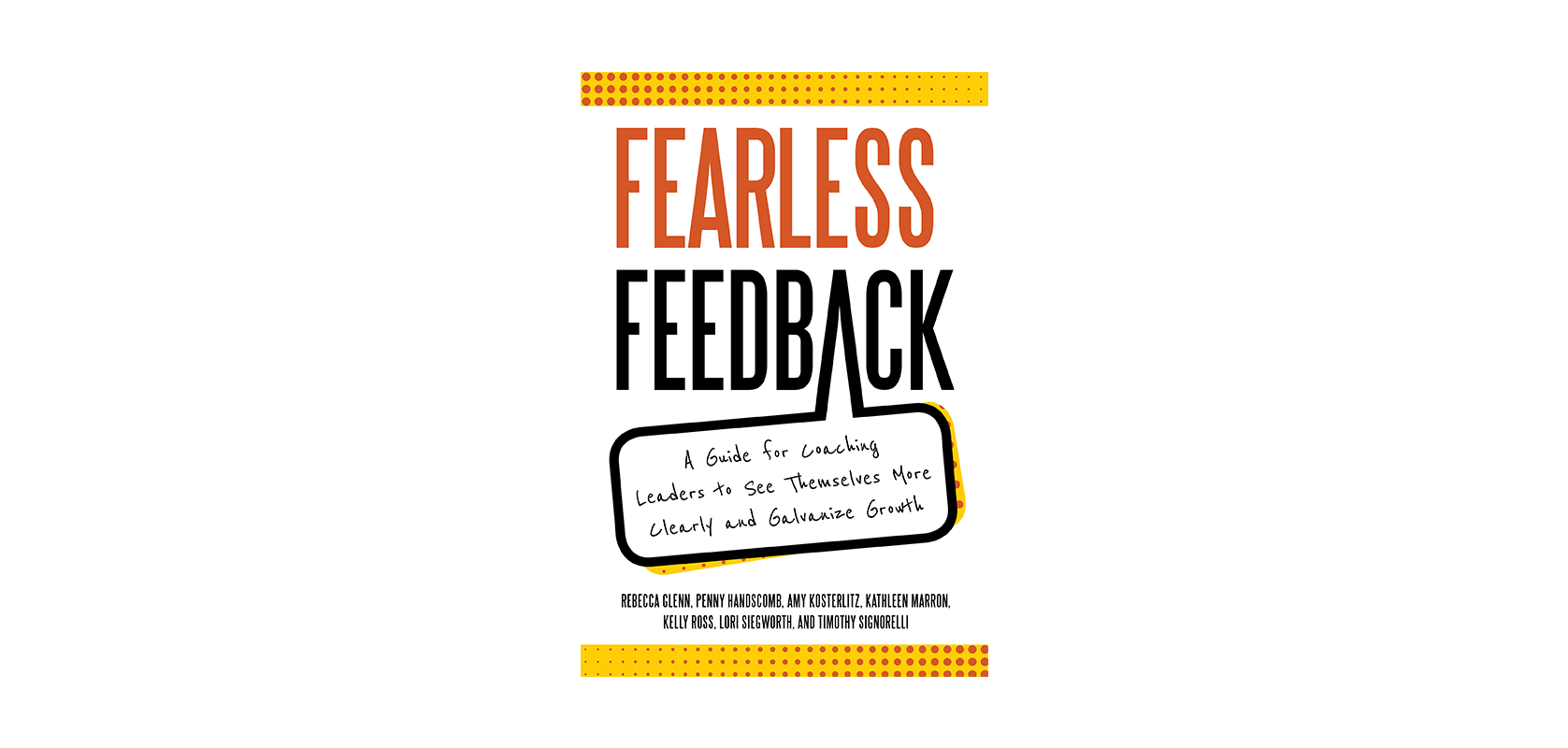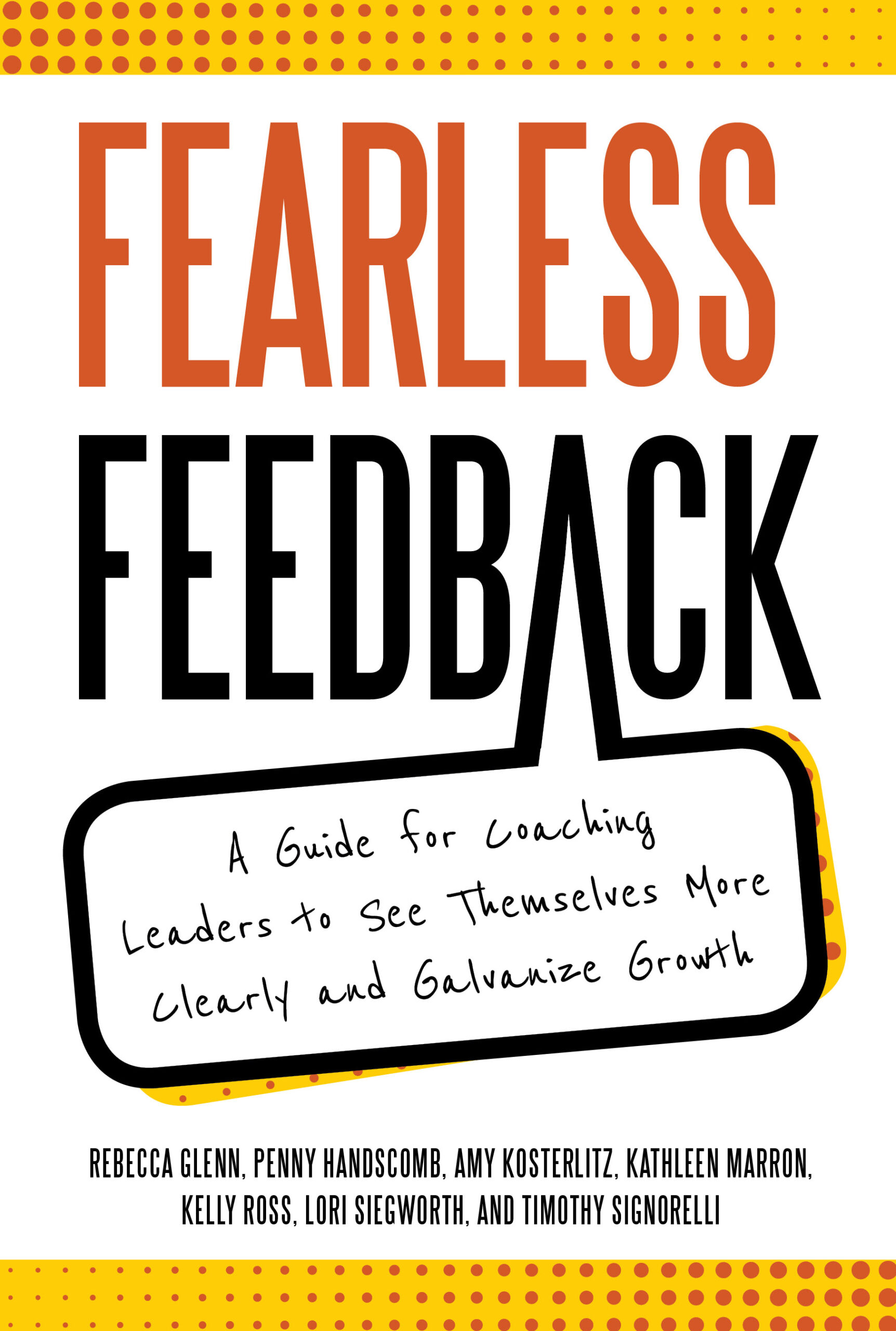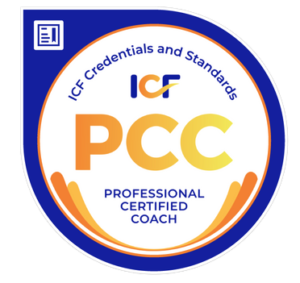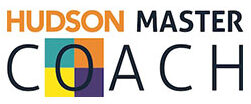I am excited to share that Fearless Feedback: A Guide of Coaching Leaders to See Themselves More Clearly and Galvanize Growth is now available at fearlessfeedbackguide.com. If you are a leadership coach, this book will help you collect fearless feedback through interviews for your clients. If you are a leader, or you work with leaders, this book will provide insights for navigating the often-emotional practice of giving and receiving feedback.
The topic of feedback is one I have long been intrigued by. My experience of feedback is shaped by ‘growing up professionally’ at a professional services firm where there is an obligation to speak up. Feedback, positive and constructive, is a daily experience. After a meeting a colleague might say:
“I really liked how you facilitated today’s team session. You did a nice job of making sure all the voices in the room were heard and managed not to let one or two people take over. Everyone was able to weigh in on today’s important topic. I would love to see you take the facilitation role again for future team sessions.
Or
“I noticed that you interrupted Jane three times, I saw Jane stop talking and this means we lost her point of view. Your interruptions came when you had great things to add. I suggest you make a note when ideas come to you but wait for Jane to stop speaking before you share.”
Leaving the firm for grad school and then starting my own Leadership Coaching, Facilitation, Learning and Talent Strategy consulting practice has given me insight into how many experience feedback differently than I have, or have never worked in a feedback culture at all. In grad school, for example, I learned quickly when I offered feedback to a classmate after a team project meeting that she had not had the same experience as me, she was not so thrilled to receive my feedback and offered no feedback in return.
Over and over again, I see leaders and team members not receiving much feedback, working for a boss whose effort to be ‘nice’ means the real message of feedback gets lost, and lacking skills to deliver or receive direct feedback in the spirit of development. I believe receiving clear, direct, honest feedback is fearless, and it is critical to my growth as a leader. My obligation as a leader is to deliver clear, direct, honest feedback fearlesslyto those I work with.
As I build my leadership coaching skills and work with many leaders as clients, I want to share the power of feedback with them. I would not be who I am today without the feedback given to me in the spirit of my development. Sometimes that feedback was clear and actionable. Other times the feedback was hard to hear or confusing. Sometimes it could have been delivered better. Almost all of the feedback has been important to my leadership development. How feedback is delivered and how I receive it is critical. I want other leaders to have the opportunity to understand how they are perceived, which is often different than what they intend. Fearless feedback is the starting point. As a coach, I often begin leadership coaching engagements by interviewing the leader’s (my client’s) stakeholders: her boss, peers, direct reports. These stakeholders are the system in which the leader works and can bring perspective of what is it like to work with her. These interviews and all of the process and emotions around them is what we explain in Fearless Feedback: A Guide of Coaching Leaders to See Themselves More Clearly and Galvanize Growth.
Building my coaching skills and raising my self-awareness as part of the Hudson Institute of Coaching’s Master Coach Program in 2016 led me to collaborate with six other master coaches to codify what we learned about giving and receiving feedback in the context of leadership coaching engagements. We each have different personal and professional backgrounds and bring our own experiences with feedback. In Fearless Feedback: A Guide of Coaching Leaders to See Themselves More Clearly and Galvanize Growth, we:
- Lay out the seven steps leadership coaches take to set up the feedback process
- Engage with the leader’s stakeholders
- Collect feedback
- Synthesize feedback themes, and
- Support the leader in building a plan to take action on the feedback.
Here is the framework we share.

In our Master Coach class we each took on the roles of being the coachto another member of the cohort and each being the clientto a different member. Being in both these roles provided many insights, including a reminder of how vulnerable it is to receive feedback and the many emotions that are at play as both collector and receiver of the feedback. I remember our cohort debrief on what we each learned and experienced. I was thinking that we had uncovered gems that needed to be shared with other coaches. As our collaborative writing began, the seven-steps discussed in the book, emerged.
We realized that beyond the steps or “bones” of how a leadership coach conducts the stakeholder feedback process as part of the coaching engagement, there are emotions at play for all involved. For feedback to be fearless, the emotions must be addressed and supported. Preparing to present at Hudson’s coaching community conference in 2017, we built a demonstration of some of the conversations that are part of the 7-step framework, showing both the dialogue (out loud) conversation and the emotions which are often not said out loud.
Imagine: you see and hear the coach speaking with her client. Standing behind the coach and client are signs with emotion words popping up to illustrate the feelings that are not being said.
The room of 250 coaches laughed and learned with us. In the book we share the story of Coach Greta working with two clients, Richard and Sue, and illustrate both what is said and the underlying unspoken emotions.
I am proud to share with you Fearless Feedback: A Guide of Coaching Leaders to See Themselves More Clearly and Galvanize Growth!You can learn more and buy the book on our website: fearlessfeedbackguide.com or on Amazon.






